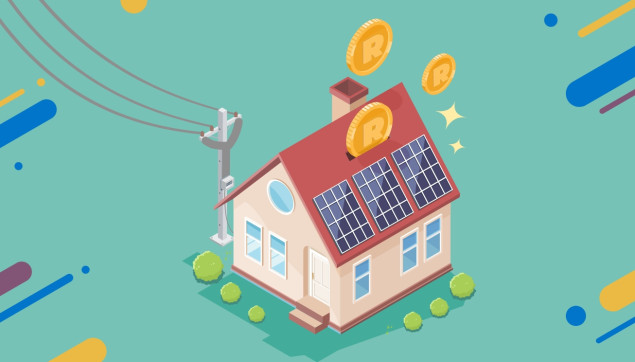What you should know about household solar power and tax breaks

Published on 26th July, 2023 at 12:35 pm
In his 2023 budget speech, finance minister Enoch Godongwana proposed a tax rebate for the installation of residential solar panels to encourage renewable energy generation and reduce demand on Eskom’s grid. If the draft legislation is tabled during the Medium-Term Budget Policy Statement in October 2023 and approved by Parliament, it will be put into effect in January 2024.
Reading time: 3 minutes
In this article you’ll learn:
- How to determine if solar power is the best option for your household.
- How to claim the tax rebate if you’re eligible.
- How TaxTim can help you with your tax return using its powerful online tool valued at R672, free to Reality Club, Core and Plus members.
The tax rebate at a glance
The tax rebate, of up to 25%, only applies to new and unused rooftop solar panels – each with a minimum capacity of 275W – that are connected to the mains distribution in residential properties. Batteries, inverters, other components and installation costs are excluded to encourage households to generate electricity rather than storing energy from the grid to use during loadshedding.
An accredited installer must issue a Certificate of Compliance (CoC) that the solar system is SABS (South African Bureau of Standards) and SANEDI (South African National Energy Development Institute) compliant.
“The once-off tax rebate allows you to subtract up to R15 000 from the final tax liability on your return,” says Nicci Courtney-Clarke, COO and Head of Tax at TaxTim. “Unlike a tax deduction, which decreases your taxable income, a rebate is a rand-for-rand reduction in the amount you owe the South African Revenue Service (SARS).”
Steps to qualify for the solar panel tax rebate
The tax incentive has no ownership limitation, which means whoever paid for the solar system, whether it’s the landlord or tenant, qualifies for the rebate. “Occupants of sectional title properties with permission to install solar systems are also eligible, but there are no current provisions for claiming levies attributed to the cost,” adds Courtney-Clarke.
Find out what the costs for going off the grid are here.
Claiming the tax rebate
To be eligible for the rebate, the solar system needs to have been installed between 1 March 2023 and 29 February 2024 for the 2024 filing year. By presenting an itemised VAT invoice that shows the cost of the solar panels, pay-as-you-earn taxpayers can claim the rebate during the 2023/24 filing season, while provisional taxpayers can offset it against their provisional and final payments.
“Once we have visibility of the 2024 tax return and what SARS requires on the ITR12 form, we’ll include it in TaxTim’s interactive process,” concludes Courtney-Clarke.
Until then, you can still enjoy free access to TaxTim, an easy-to-use online tool that can help you do your income tax returns.
What happens if I sell my home?
If you sell your home with the solar system after claiming the rebate, you will not have to repay SARS. However, if you sell the solar panels within the first year, you will need to repay the rebate – this is to discourage abuse of the incentive.
Have you used our income tax calculator yet? It helps you work out the tax deductions you will pay for the current tax year. Plus, if you are a Reality Core or Reality Plus member, you can earn tier points by doing so!
Want to learn more?
We send out regular emails packed with useful advice, ideas and tips on everything from saving and investing to budgeting and tax. If you're a Sanlam Reality member and not receiving these emails, update your contact details now.
Update Now







